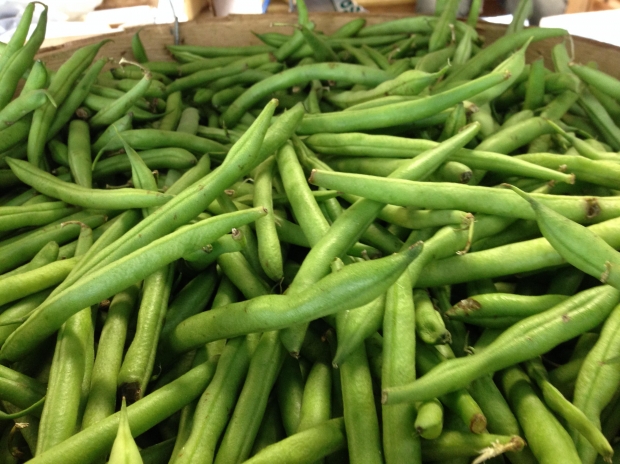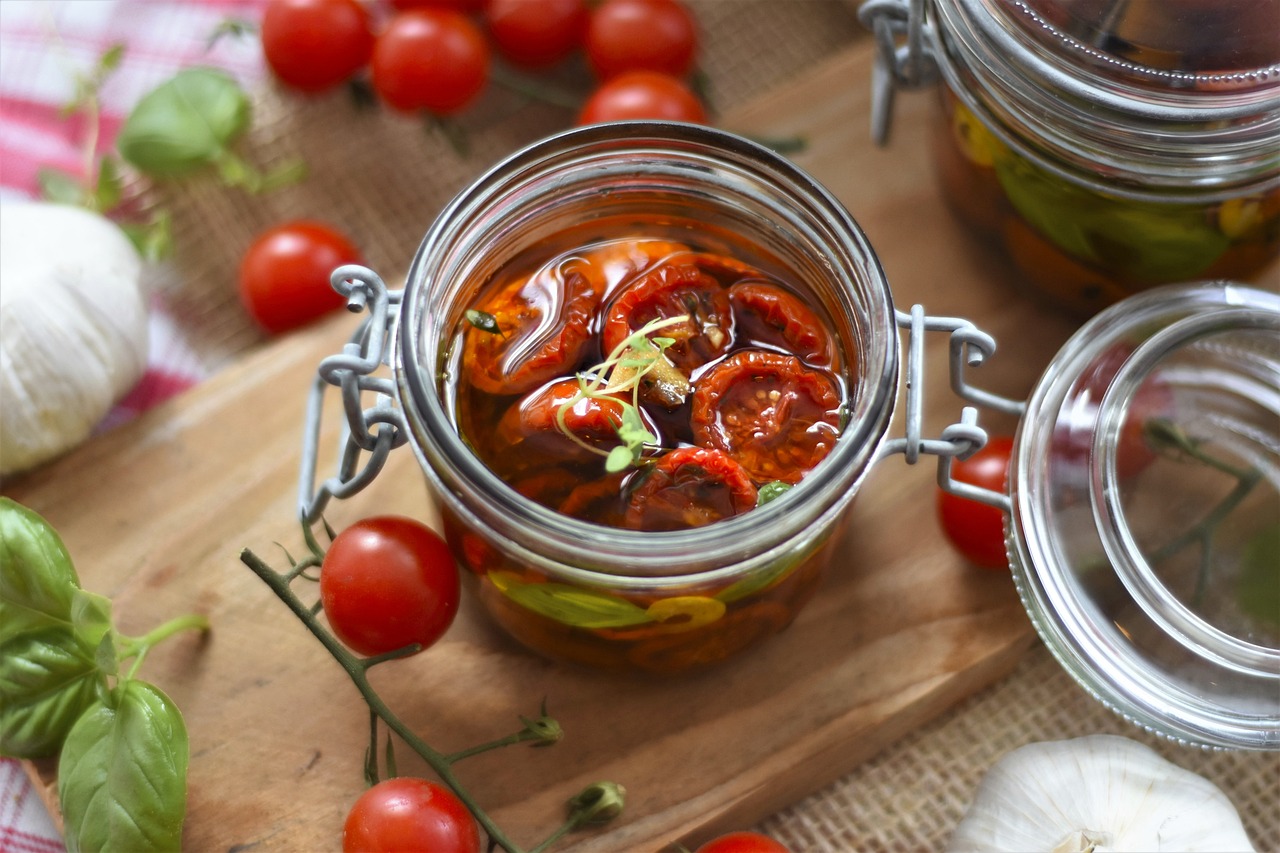Storing & Freezing Green Beans Types

As the cooler months take hold, you might have an abundance of green beans left over from your summer crops. Did you know that “Green Beans” actually derived its name from the young pods of the bean plants that are picked before the pods ripen or dry? Only then are they tender enough to be called “Green Beans” meaning “green” for the unripe fruit of the bean; many in fact are not green in color at all. The pod colors of “green beans” can be green, golden, purple, red, or streaked. Many people associate “green beans” to the recipes for green bean casserole or 3 beans salads. But Green Beans have many more attributes.
List of Legumes:
There are over 7 million tons of green beans produced annually worldwide. Green beans are actually considered a legume which describes a pod, such as that of a pea or bean, that splits into two; with the seeds considered a fruit and the pod considered a vegetable. Shapes can range from the thin “filet” beans to the wide “romano” types with the more common types in between. Green, Runner, French, Broad, Yellow Wax, Sting, and Snap Green Beans…whichever you prefer– Green bean types have been bred especially for the bright color, crisp texture, and juicy vegetable flavor of their pods. They all describe one thing in common…all are harvested and preserved in the same fashion.
Green Beans Types:
There are basically three commonly known types of green beans: string or runner beans, string less or french beans, and snap beans. Snap green beans are the ones usually grown when green bean gardening at home. They are named for the sound they make at the perfect ripening stage. They have a thin flat pod that requires less cooking time. Sting less or french beans are generally named due to whether the pod has a tough, fibrous “string” running along its length. And string or runner beans have long, flat pods that have a coarse textured skin. More mature beans display a pronounced fibrous string running down both sides. All green beans used to be called string beans because older varieties had fibrous side strings. Just before use, remove the strings and trim the ends. Generally purple beans and yellow wax beans are identical in taste and texture compared to true colored green beans.
Pole Beans vs Bush Beans:
To make matters even more confusing, when green bean gardening, beans are then split into two sub-categories: bush beans and pole or running beans. Bush beans are short plants, growing to approximately two feet in height, without requiring supports. They generally reach maturity and produce all of their fruit in a relatively short period of time, then stop production. Growing pole beans or runners requires a bean trellis in which to climb as they grow. There really is no difference between pole beans and bush beans, other than how they are grown. One may fit into your garden architecture better than the other or you may prefer the look of one to another. Some of the most popular bush beans are Blue Lake 274, Kentucky Wonder, Festiva and Burpee’s Tenderpod. Some popular pole beans are Kentucky Blue, Kentucky Wonder and Blue Lake. Check out the link at the bottom for a better distinction amongst the different green beans types.
Nutrition Facts on Beans:
The calories of green beans are considered low carb beans that do not contain saturated fat. They are a rich source of vitamin K and B, minerals and are high in protein. This makes them an excellent substitute for meats in the diet. Apart from protein, beans also contain iron, fiber, folic acid and starch. Those with colored shells (such as scarlet runners) also contain antioxidants. The protein in legumes is incomplete, but, when combined with grains, they present a perfectly balanced protein, making beans and grains (mostly rice) dishes an ideal meal for vegans or vegetarians.
Harvesting Green Beans:
The best time to harvest green beans is when they are small and tender. Look for beans with nicely shaped pods and small seeds. The beans should also have a velvety feel to them and be pliable. Beans that are over mature will be tough and stringy and should not be used. Light green to white wax beans have a tendency to be tough. The whiter they are, the older they are. To harvest, carefully pull them from the vine right above the bean, detaching a small length of the stem to avoid damaging the beanstalk or pod. Look for slender yellow to pale green beans. Avoid beans with white mold or mushy tips. If you can see the shape of the beans within the pod, the beans are overgrown. If beans are picked just right, the green beans plants will continue to produce for several weeks. Pick regularly once the pods have reached a length of 6-8″ but make sure they are picked before the beans inside begin to swell. By accomplishing this – which may mean picking them every day or two – you will prolong the harvest period for 6-8 weeks. Production will stop if you allow even a few to ripen. If you plan on eating your green beans within the next few days, storing them in the refrigerator is the best option. Place the beans in a plastic bag to lock in the moisture and to prevent wilting. Do not wash or cut the beans before storage, only before eating, as they will begin to lose some of their nutrients.
To Freeze Beans:
If you have been spoiled eating fresh green beans straight from your garden throughout the summer, then you may be dreading the end of the growing season where you will have to revert back to the store bought or canned green beans. Just know that freezing green beans is the easiest way to enjoy them year round. Canning requires jars, lids, and a pressure cooker along with having to sterilize the jars prior to use. It does entail tedious work. However, freezing green beans only requires a pot to boil the water, a bowl for blanching and freezer bags, or a good quality food saver.
Blanching Green Beans:
Green beans must be blanched before any long term storage to destroy the enzymes attached to the pods that otherwise might cause the beans to change color, become pitted or lose their flavor. To blanch beans, first select the best specimens then trim and cut the beans to your desired length and form, about 1-2 inches in length. You may even prefer to leave them whole if they are young and tender. Wash them in salted water to remove any bugs. Next, bring a pot of water to a moderate boil, submerge the beans in the boiled water for about 3-5 minutes (You can re-use this water three to five times – but make sure it’s brought back to a rapid boil. Use the preserved water afterward to freeze as stock for soups or stews or use as additional boiling water for other vegetable stock—it contains nutrients). Next, use a large slotted spoon to remove the green beans from the boiling water and immediately transfer to an ice bath for about 3-5 minutes to stop the cooking process. Drain them well, trying to get as much water off them as possible before freezing.
A Word of Caution:
When preparing colored green beans at home, a lot of cooks will boil or blanch them up and are then disappointed when the color bleeds out and they are left with green colored beans. Once heat is applied to colored beans…especially the purple beans, they will loose their color and end up green in color. If you want to blanch colored beans, add a teaspoon of baking soda to the cooking water to help retain the color before freezing. Furthermore, most chef’s will agree that the best way to cook colored “green beans” to retain their original color is to ” butter baste ” them. However, they will still not be as vibrant in color as in their raw form.
Freezing Green Beans:
If you have a FoodSaver, now would be a great time to use it. If you don’t, make sure you get as much air out of the ziplock bag as possible to help prevent freezer burn. When packing the freezer bags, allow 1/2 inch of headroom in each bag for expansion. then seal the freezer bag and place in the freezer. Beans can be stored for about 10 months at 32 degree F. Green beans are often steamed, boiled, stir-fried, or baked in casseroles thereafter.
The Author:
Kali S Winters is gardening enthusiast and author who spends much of her time teaching others how to setup and maintain beautiful, amazing gardens.
Photo. Jon Cutrer
Source: Ab








